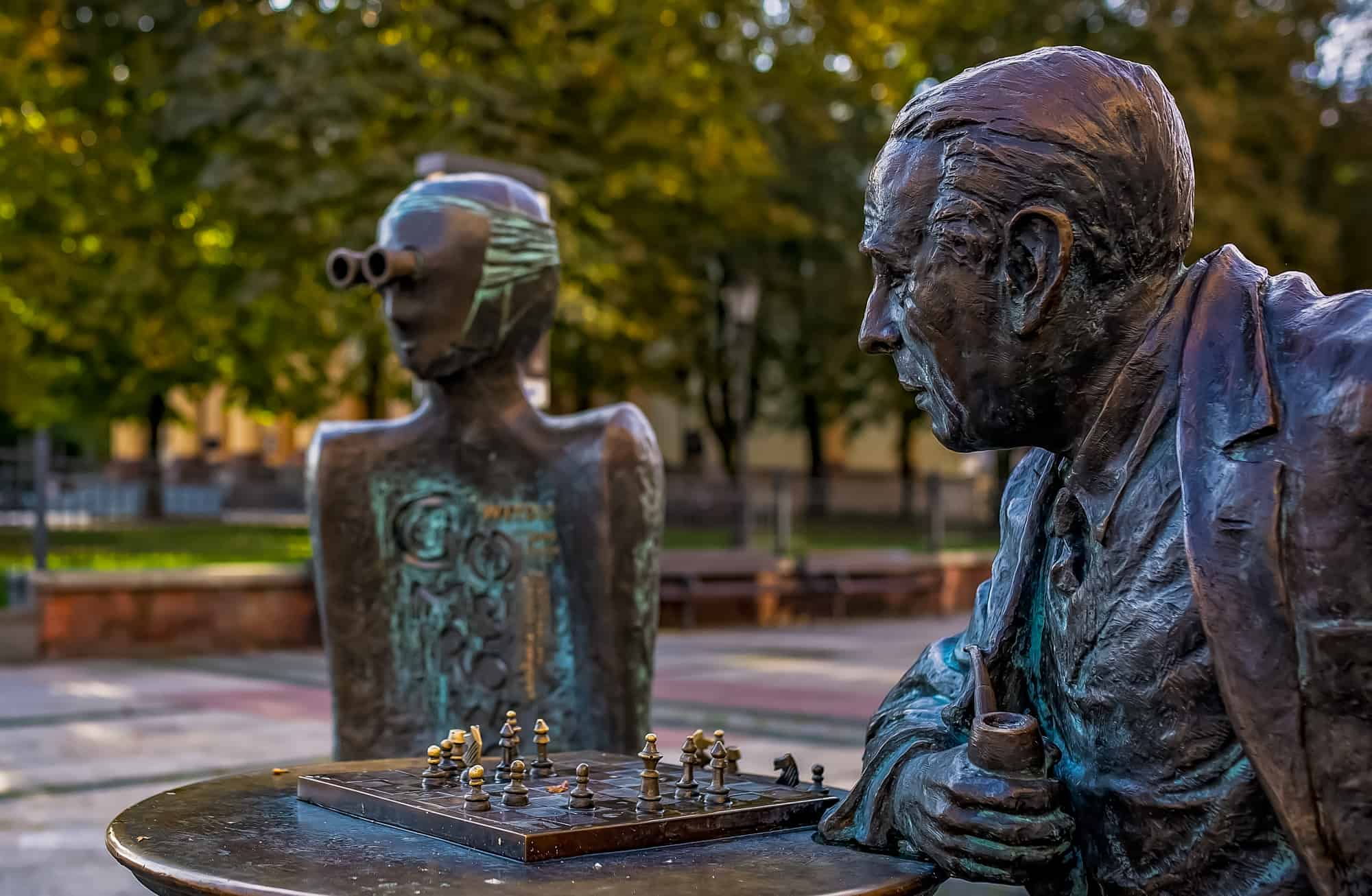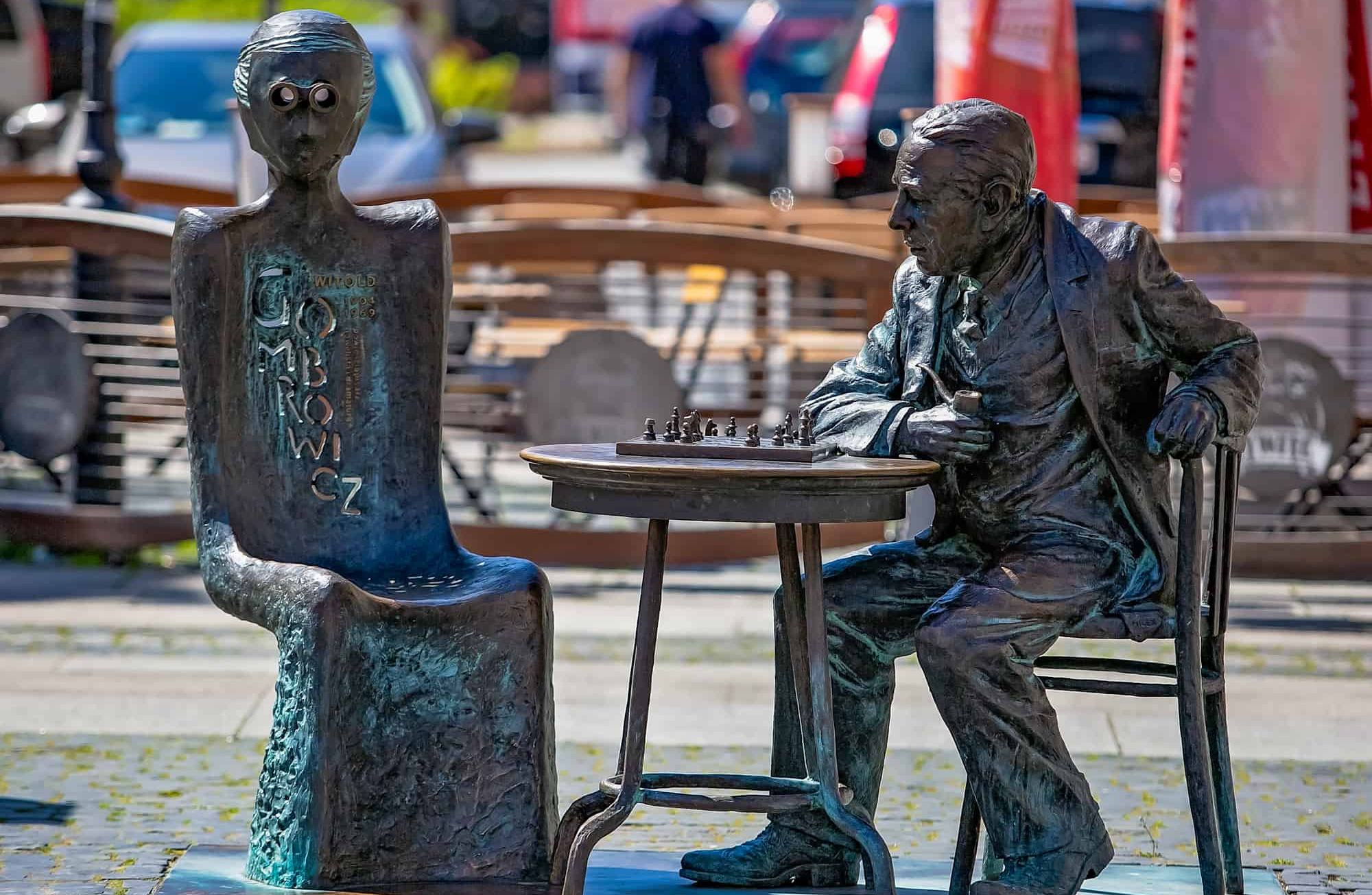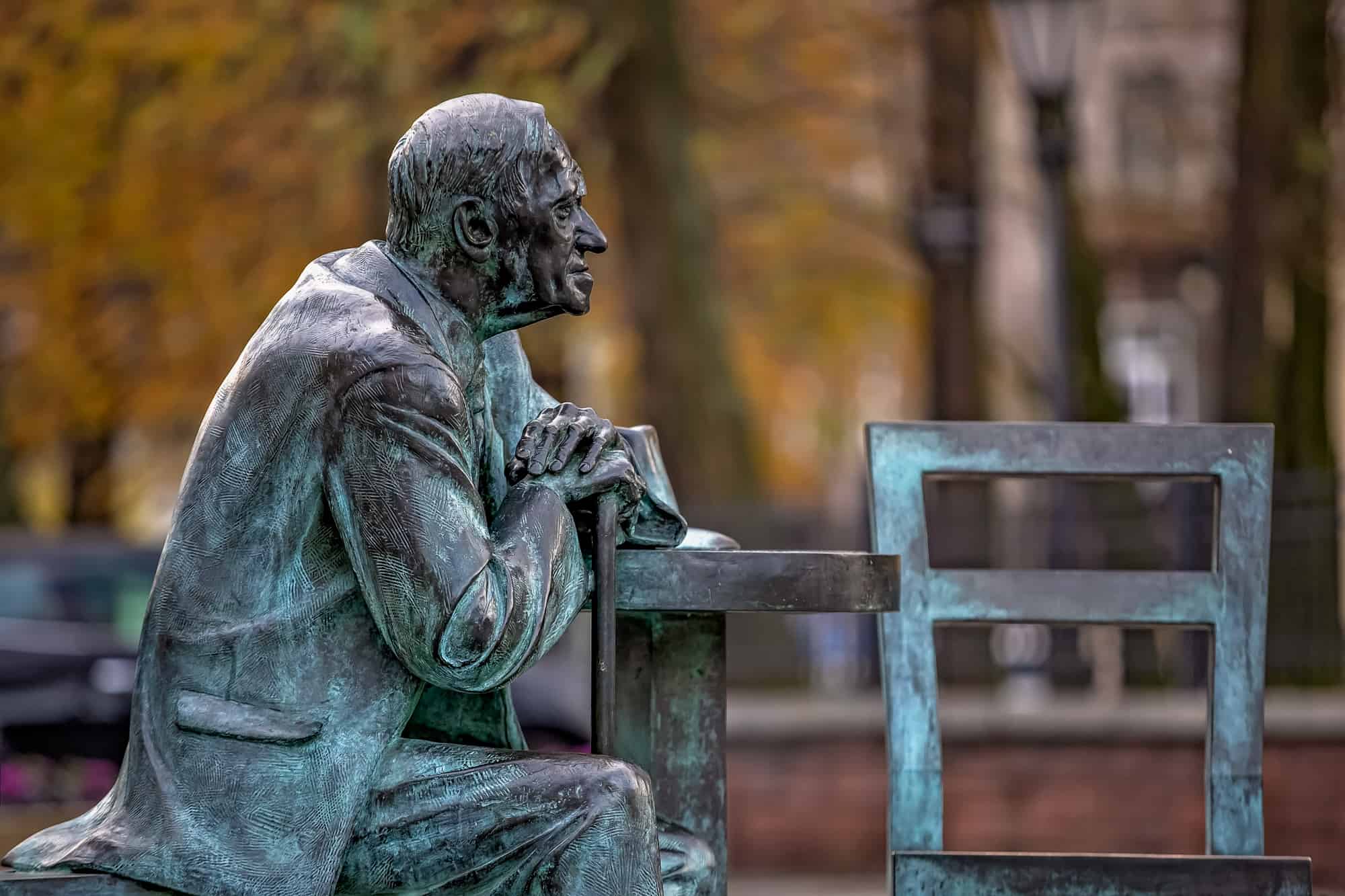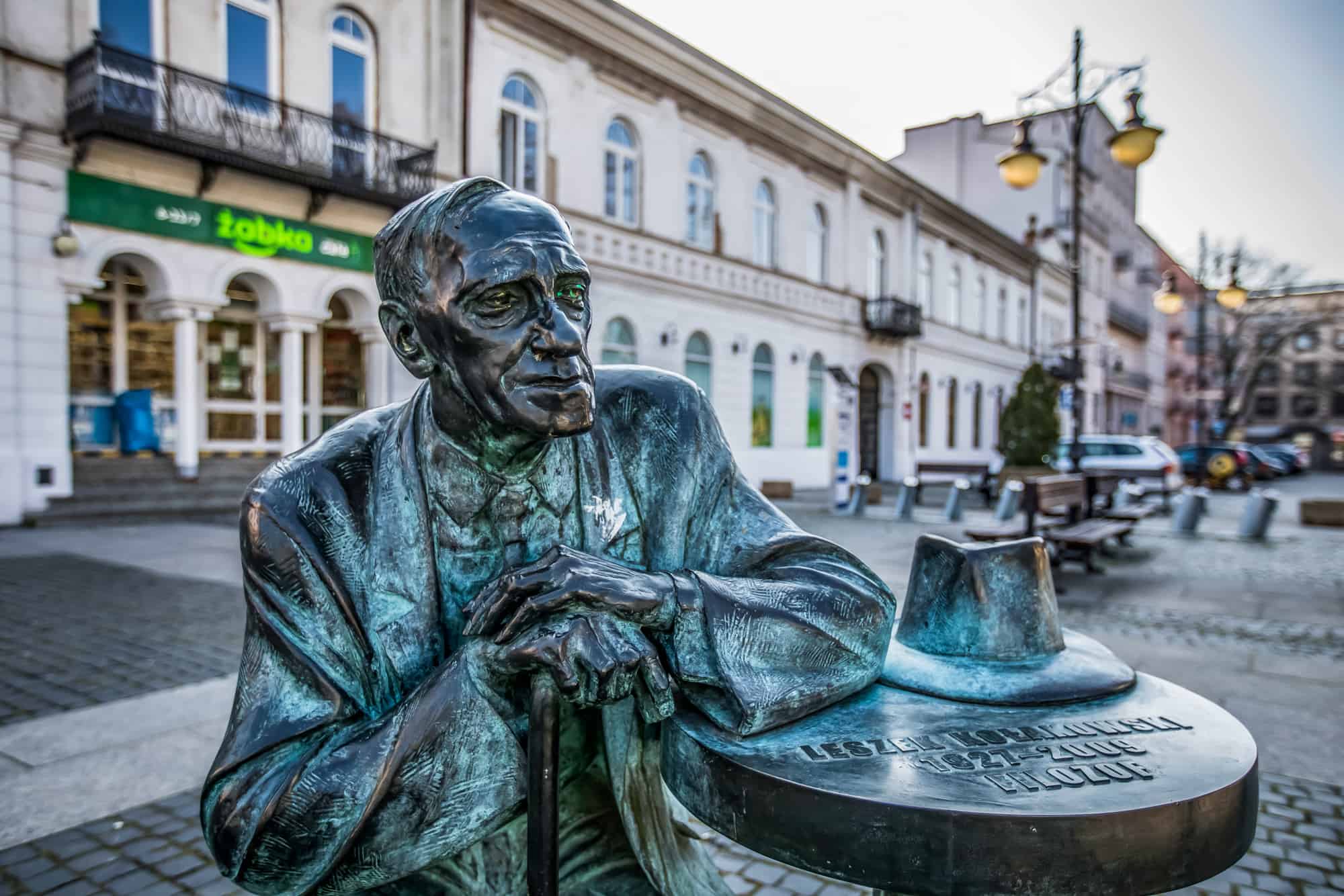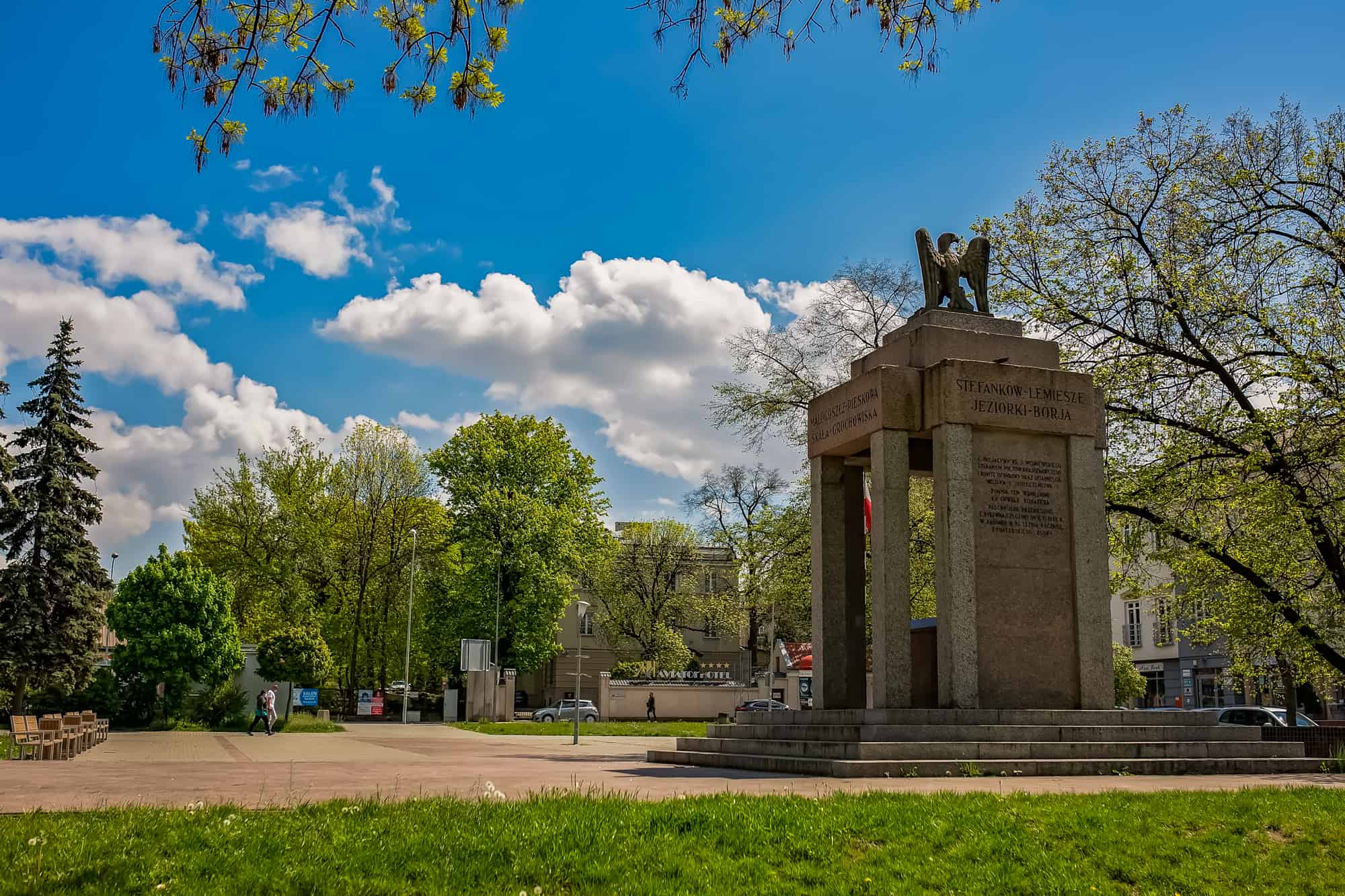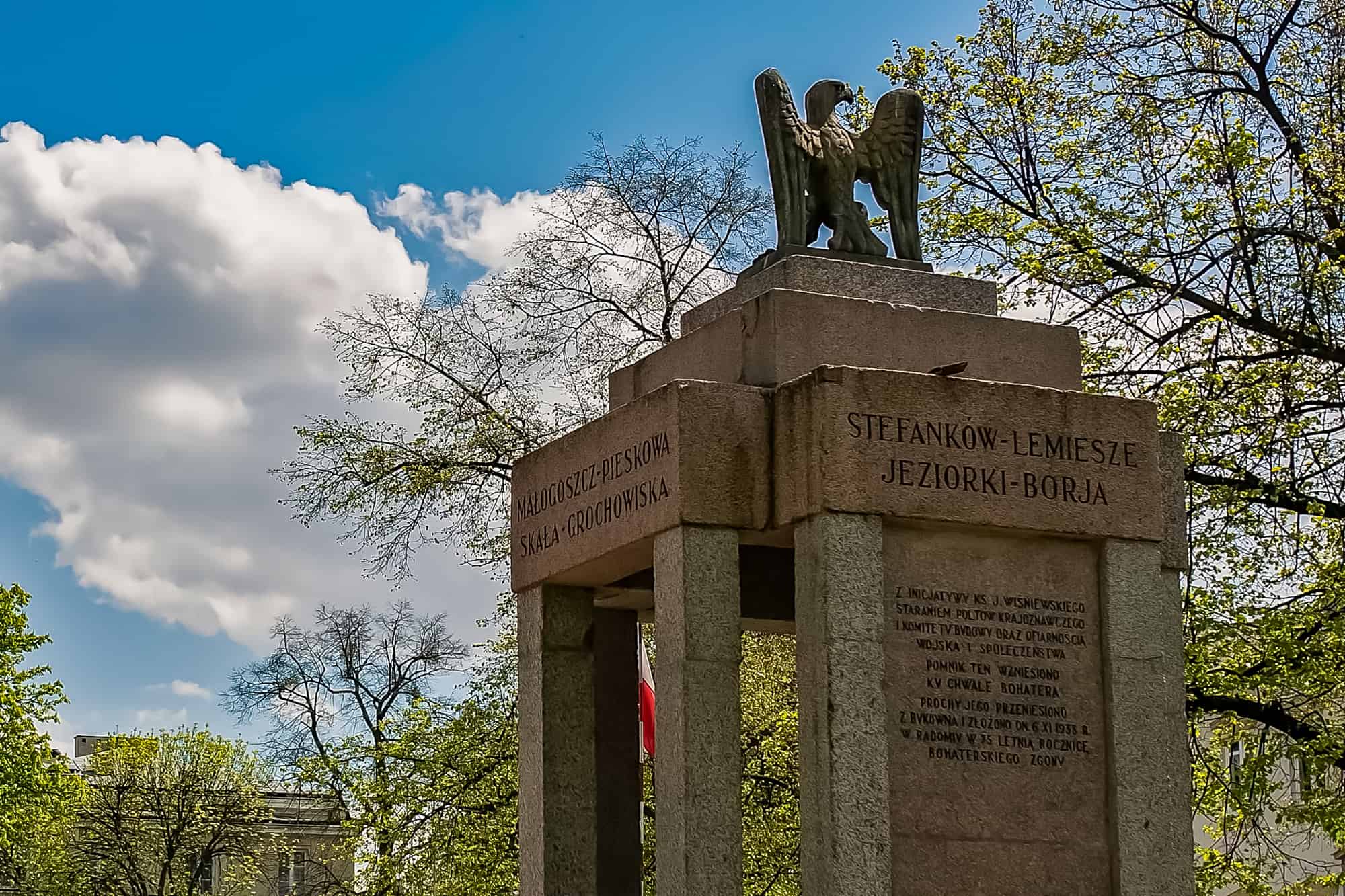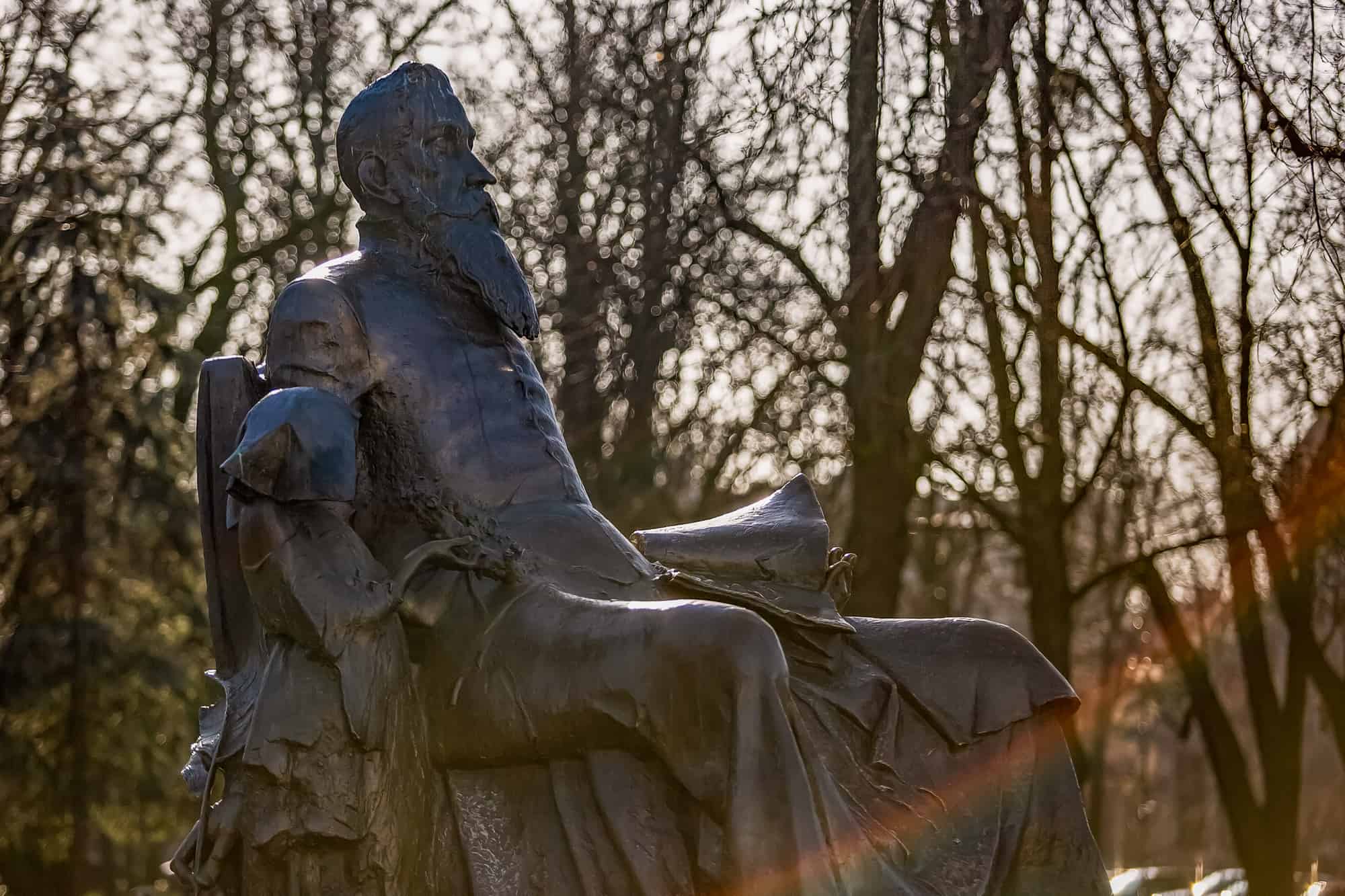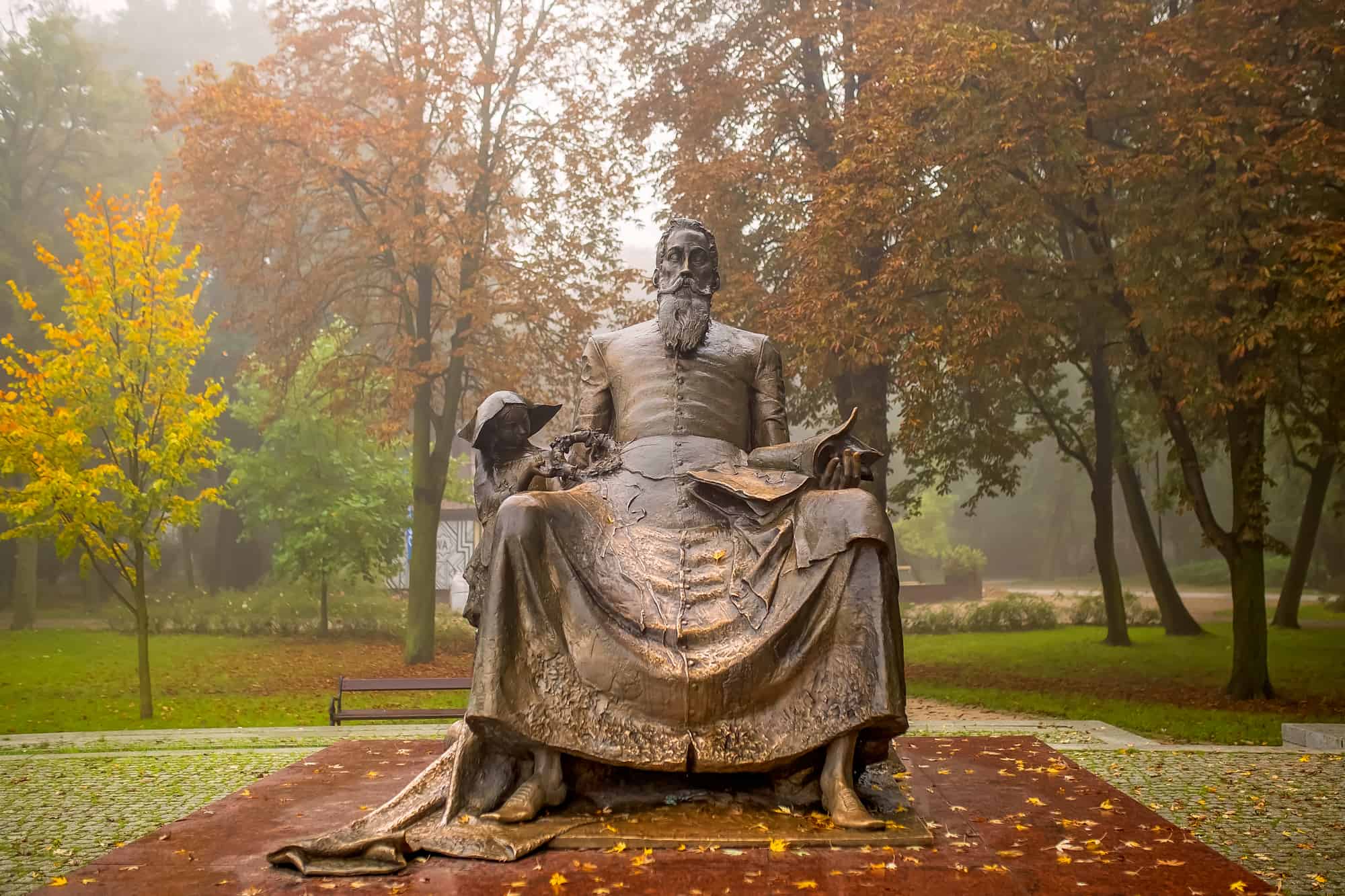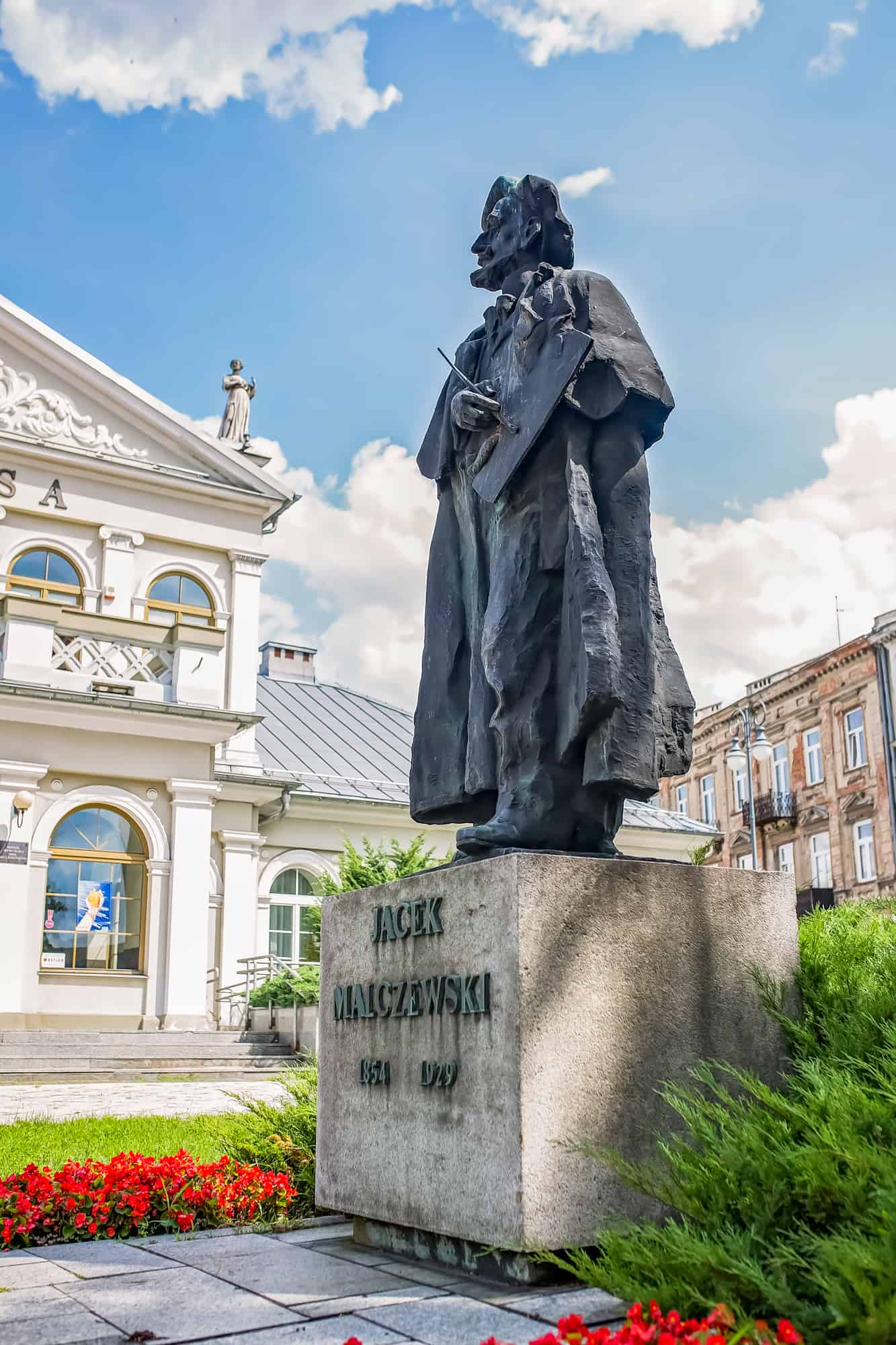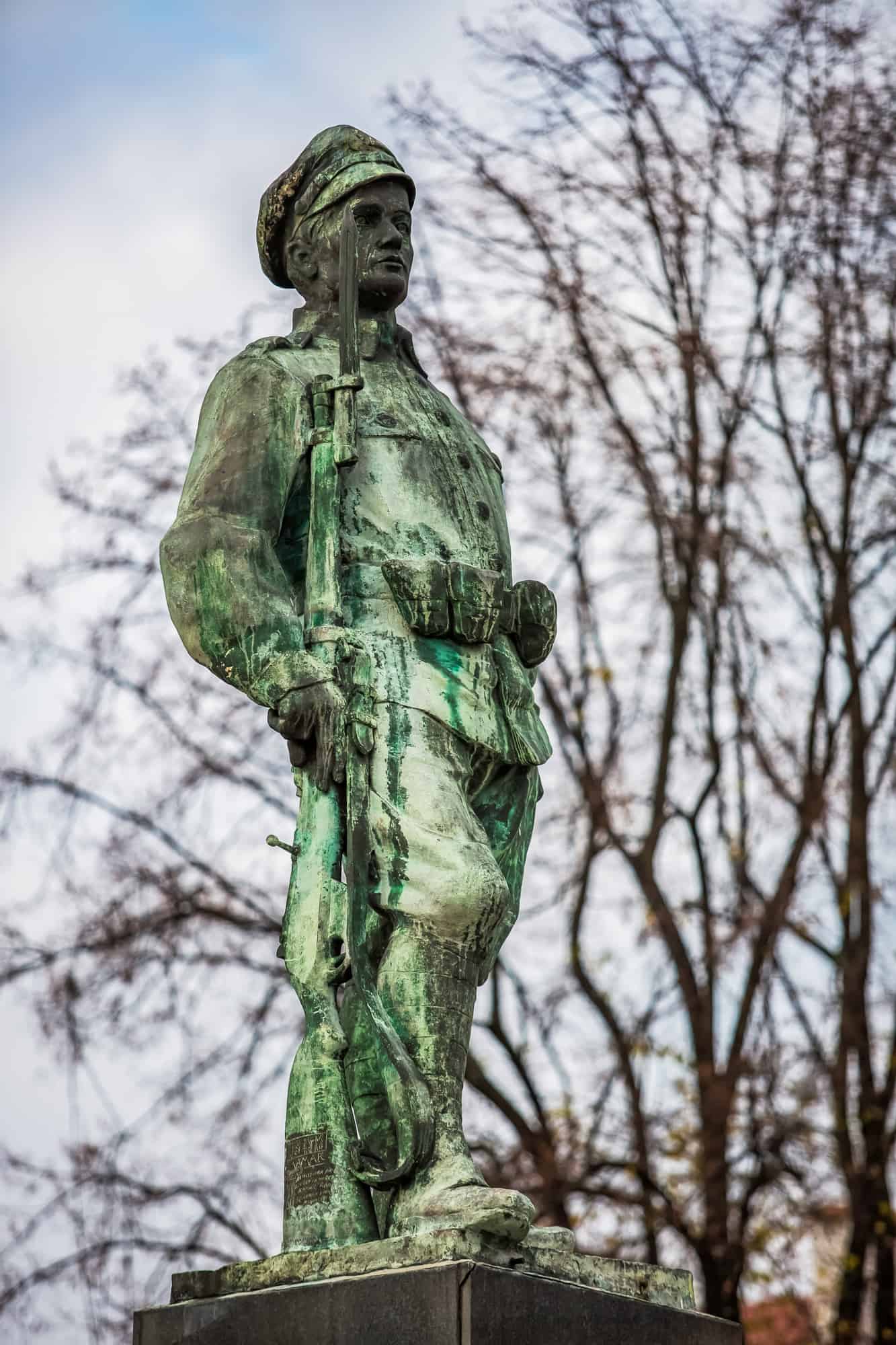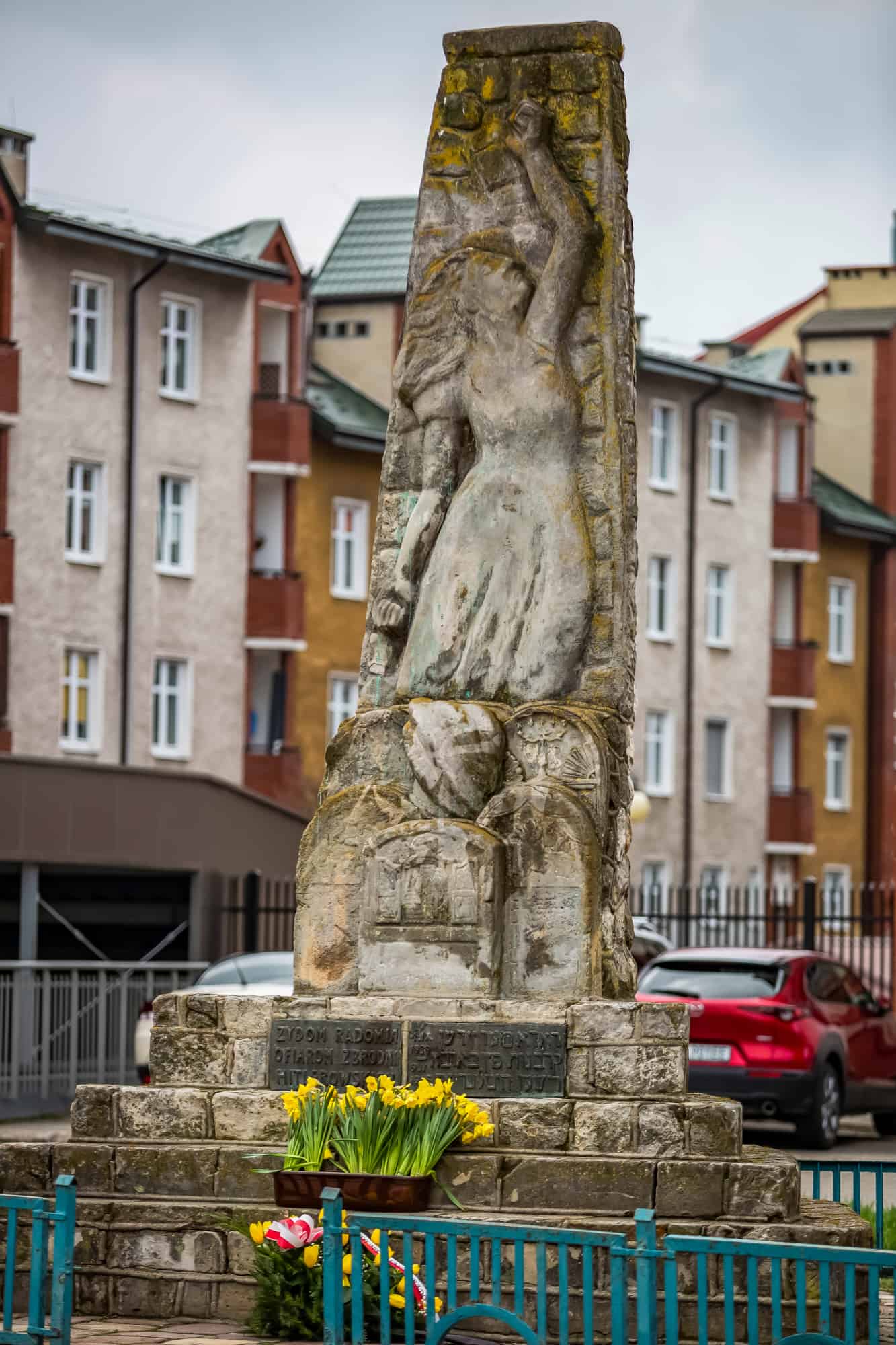MONUMENTS AND BENCHES
The most characteristic monuments of Radom are located at Konstytucji 3 Maja Square in the very centre of the town. Near the garrison church, you will meet Witold Gombrowicz, who arrived to Radom while visiting his brother in the nearby Wsola. Each tourist may sit next to the writer and play chess with him.
The Mausoleum of Dionizy Czachowski, hero of the January Uprising, is much older. Originally, the mausoleum was constructed in 1938 in front of the Observants’ Monastery. Unfortunately in 1940 the German occupant ordered to demolish it. The remains of the hero were hidden in the St Catherine Aleksandryjska Church (at the Observants’ Monastery) and stone elements in the construction materials warehouse in Stary Ogród. At the 100th anniversary of the January Uprising, Radom community workers suggested that the mausoleum should be reconstructed, but their idea was implemented later in the 80s. of the 20th century in another place, near the crossroads of Malczewskiego and Wernera Streets.
One of the most characteristic monuments in Radom is the monument of John Kochanowski – most famous poet of the Renaissance. He lounges at the edge of the Tadeusza Kościuszki Park. In the same park, there is a bust of another famous Pole: Fryderyk Chopin. Both monuments were fixed at the former eastern edges of the 19th century, close to the Lublin gate.
At the northern end of the former town, near the former Warsaw gate, you will meet another great Radom resident: Jacek Malczewski, at the street bearing his name.
In the centre of medieval Radom in the market square, the monument of Marshal Józef Piłsudski’s Legions was built. The original monument was unveiled in 1930 in the place where Russians executed participants of the January Uprising, but it was damaged by Germans in 1940. It was reconstructed almost 50 years later in 1998.
Not far from there, there is the Ghetto Victims Monument. It was located in the place of a synagogue devastated by Germans. The synagogue was the heart of the Jewish district, whose history dated back to 1789, when believers of Judaism were allowed to settle within the territory of Radom. Almost 200 years ago, a new plan of the town, which let the Jewish to establish their prayer house there, was enforced. Unfortunately, the Jewish quarter ceased to exist during the Second World War. The monument is made of parts of broken matzevahes and was unveiled in 1950.
These are only several of Radom monuments. You can try to find more, including numerous commemorative stones and boards, on your own.
